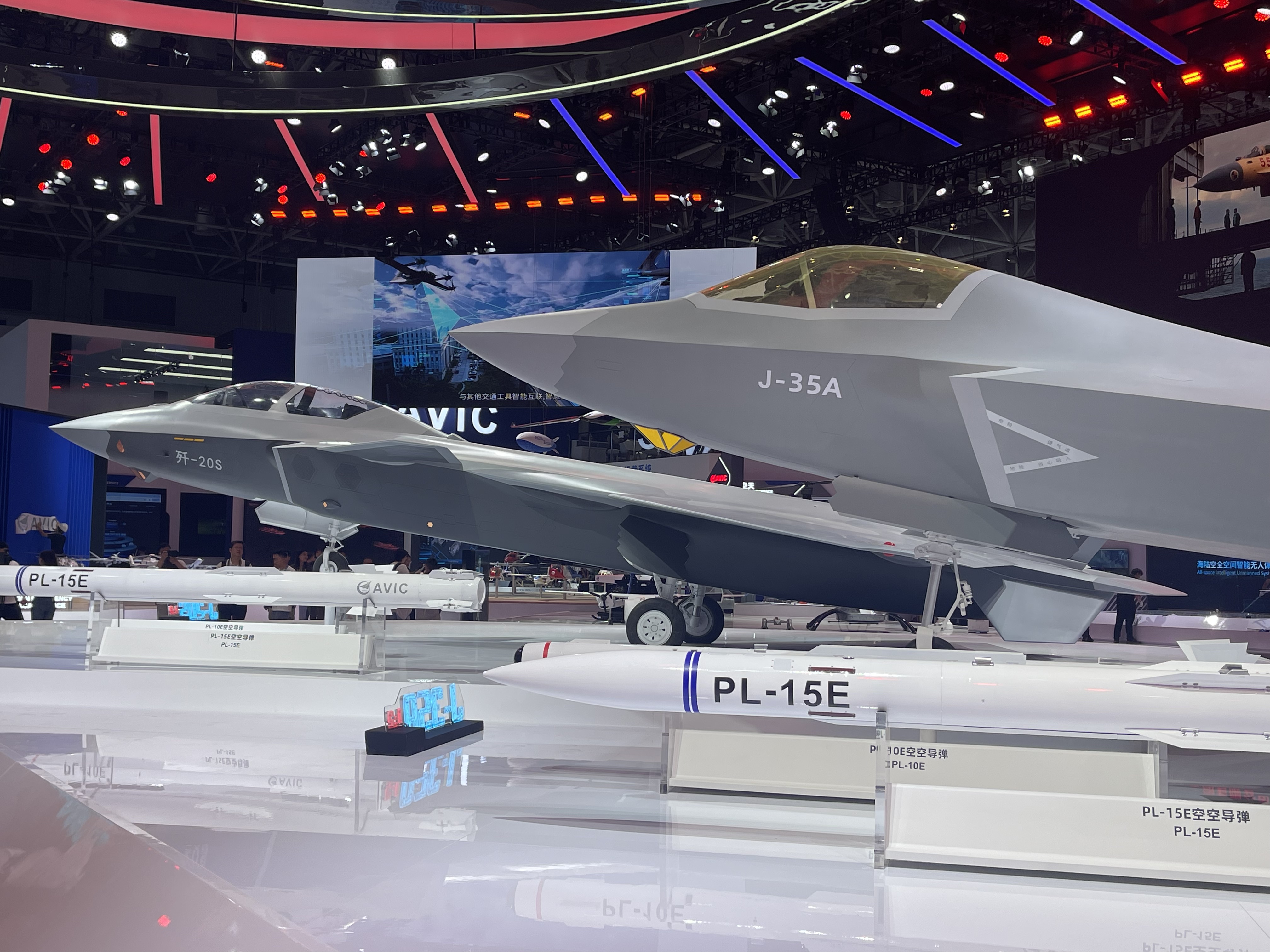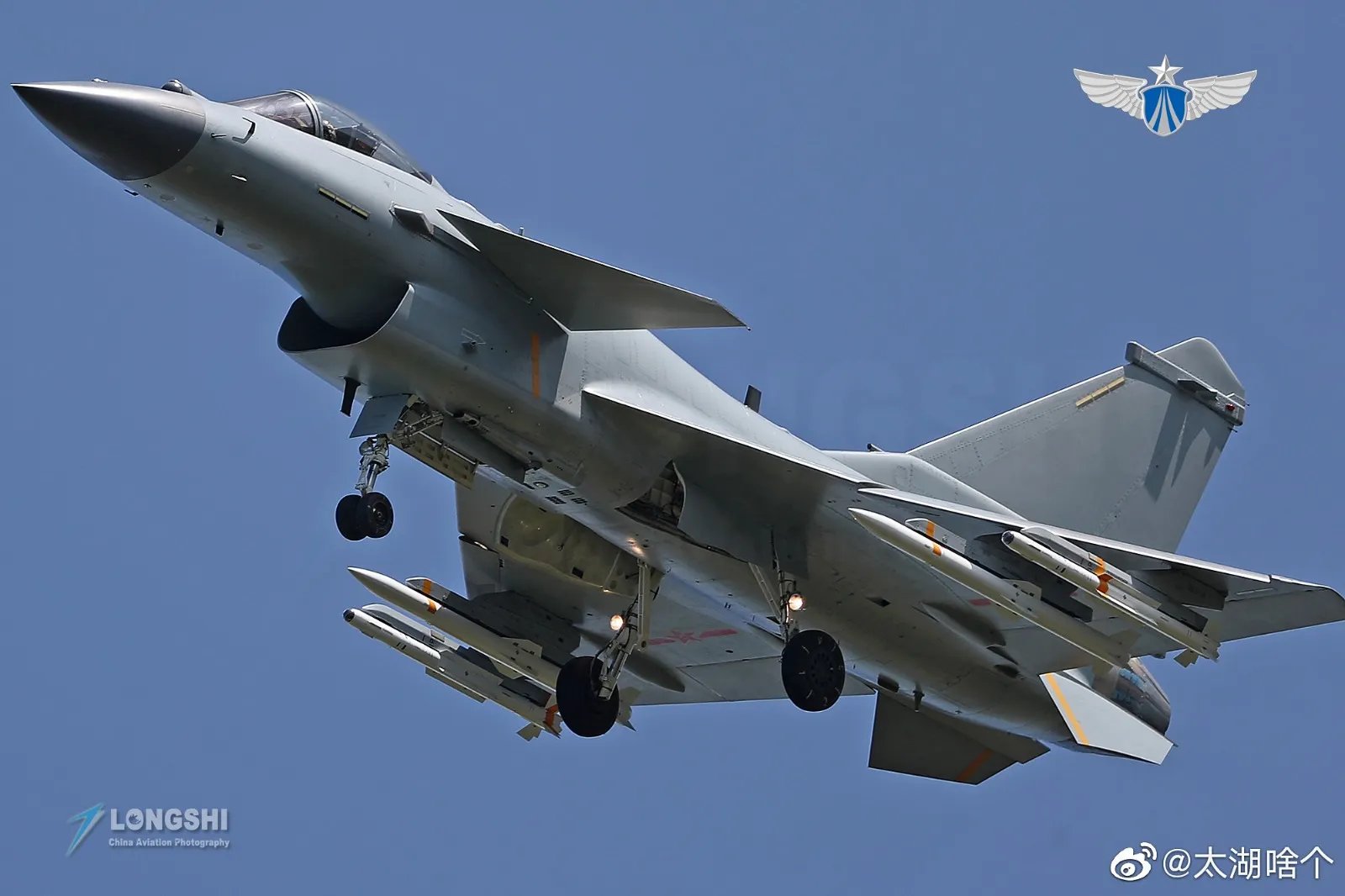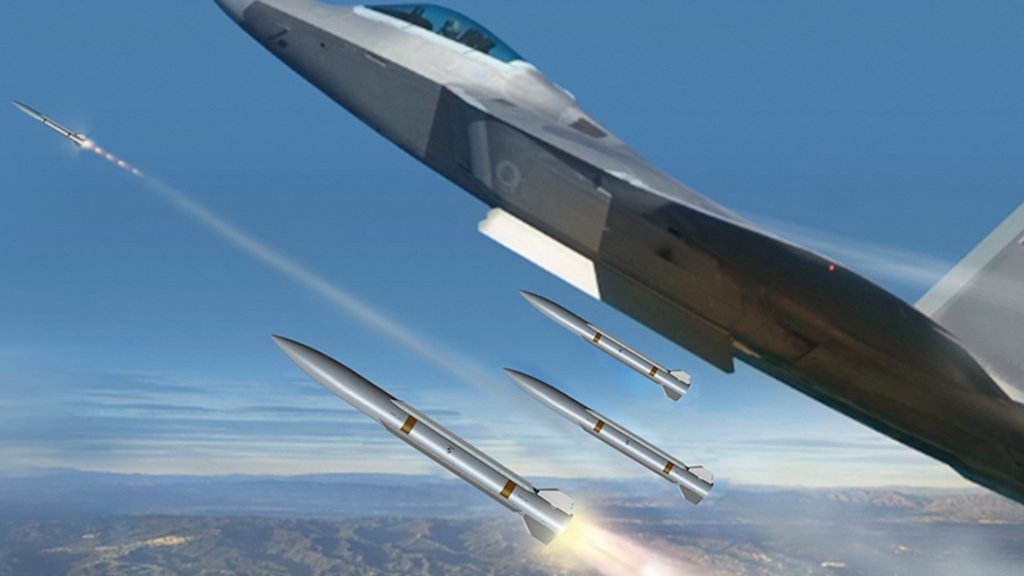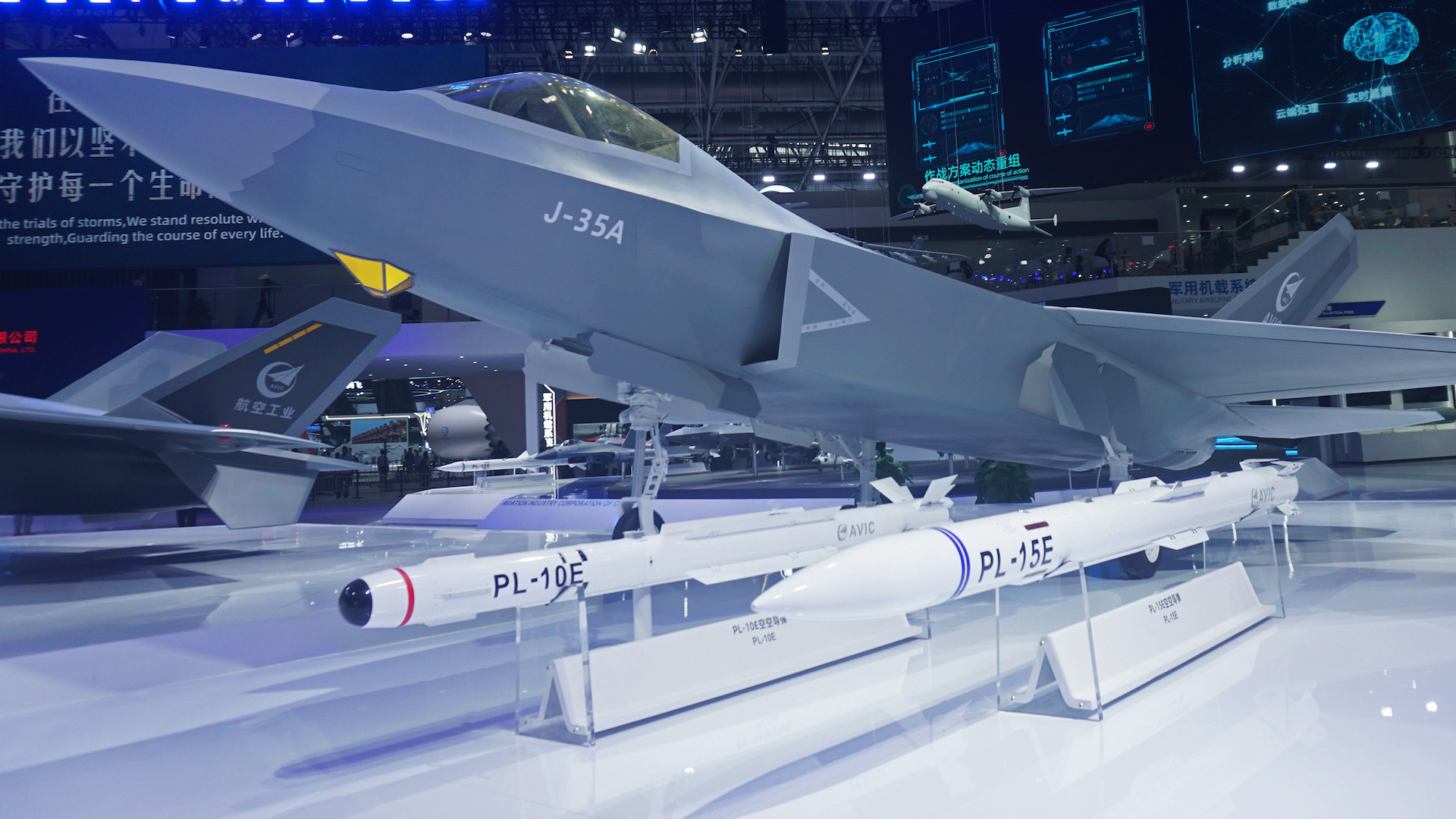China’s PL-15 active-radar-guided air-to-air missile has been reworked for improved internal carriage in the country’s stealth fighters, the Chengdu J-20 and the Shenyang J-35. This development is significant, with the promise that these fighters should, in the future, be able to carry larger loads of longer-reaching missiles while maintaining their low-observable characteristics.
Full-size mock-ups of the revised PL-15E were unveiled at the China International Aviation & Aerospace Exhibition, better known as Airshow China, in Zhuhai. While the event doesn’t officially open until tomorrow, it has already sprung various surprises, including new versions of land-based and carrier fighters seen for the first time and at least one previously unseen drone.
The PL-15E differs from the previous PL-15 in having folding rear fins, which provide a ‘compressed carriage’ capability, and other alternations ensuring that it can better fit inside internal weapons bays on stealth fighters. The cruciform tail fins now simply fold around the midway point, deploying once the missile is released from the aircraft. Meanwhile, the cruciform center-body fins are of reduced span compared to those on the original missile.
The PL-15E was displayed next to a short-range infrared-guided PL-10E air-to-air missile, in front of a mockup of the recently revealed J-35A stealth fighter and again in front of a mockup of the two-seat J-20S stealth fighter.

Already, the basic PL-15 can fit in the weapons bays of the J-20, at least. From the start, it appears the missile was tailored for internal carriage, with the original version already having distinctive cropped fins to reduce its dimensions, similar to the changes introduced on the American AIM-120C.

The new PL-15E, therefore, is likely designed to be better accommodated in the weapons bay of the smaller J-35, and intended to increase the number of medium-range missiles that the J-20 can carry. Currently, four of the standard PL-15s can be carried in the J-20’s internal weapons bay. Both those possibilities could also be true, with the PL-15E providing a dedicated internal medium-range air-to-air weapon for the J-35, and a way of accommodating more missiles internally in the J-20.
While we have not seen inside the weapons bay of the J-35 thus far, there are indications that it is scaled to carry six medium-range air-to-air missiles — very likely the compressed-carriage PL-15E version.
Somewhat confusingly, while this compressed-carriage missile is new, the PL-15E designation is not. At the 2021 Airshow China, a PL-15E was also exhibited, described as an export version. Apart from a slightly reduced range, this was otherwise similar in appearance to the basic PL-15.
As you can read about in our in-depth story on Chinese air-to-air missiles, the PL-15 is China’s standard active-radar-guided AAM and it apparently was intended to at least match the performance of the U.S.-made AIM-120D.
The PL-15 has a dual-pulse rocket motor that provides a reported range of 124 miles. Another important feature is a two-way datalink that allows the launching aircraft to provide guidance updates to the missile.
The missile seeker uses active electronically scanned array (AESA) technology, with active and passive modes, and it’s claimed to have better resistance to countermeasures than previous Chinese air-to-air missiles.

As well as being the main armament of the J-20, the PL-15 is now also used by most other modern Chinese fighters, including the J-10C, J-11B, J-15, and J-16. The first export operator was Pakistan, which acquired PL-15s for its JF-17 Block III and J-10C fighters.
All in all, the PL-15 — even in its basic form — is widely assessed as being a very capable air-to-air missile and one that is likely superior in some respects to certain Western equivalents.
The Royal United Services Institute (RUSI) defense and security think tank determines that the PL-15 “out-ranges the U.S.-made AIM-120C/D AMRAAM series and has a comparable maximum range to the Meteor.”
Reflecting this, the development and fielding of the PL-15 has been a major driver behind the United States launching a program of improvements for its AIM-120D, creating a stopgap weapon before the new long-range AIM-260 enters widespread service. The AIM-260 program itself was also largely a response to Chinese AAM developments. In the meantime, the U.S. Navy’s AIM-174 air-to-air missile is also seen as a direct counter to China, to make full use of so-called kill webs for very long-range engagements in the Pacific theater.

As well as working on secretive new range air-to-air missiles, the United States has also been looking at ways to increase the ‘magazine depth’ of its existing fighters, specifically adding more missiles to the F-22 and F-35, which are constrained by their internal weapons carriage — provided they are to retain their critical low-observability advantage.
In the air-to-air configuration, the F-22 carries six AMRAAMs and two AIM-9 Sidewinders. However, the F-35 can only carry four internal AMRAAMs, which led to a program to develop the Sidekick weapons bay adapter, which will boost the number of internal AMRAAMs a Joint Strike Fighter can carry to six.
The United States has also been working on more radical ways of increasing internal air-to-air missile capacity.
The Raytheon Peregrine is a design for a new medium-range missile that combines superior performance with small size, potentially doubling the number of missiles that an F-35 or F-22 can carry internally.

A similar miniaturized beyond-visual-range air-to-air missile, Lockheed Martin’s Cuda, was promoted in the early 2010s, though more recently it seems to have largely disappeared from the company’s marketing.
It seems that Cuda would have been a shorter-range weapon than AMRAAM and would utilize a hit-to-kill design to help reduce its dimensions.
It would be surprising if China, too, isn’t working on all-new air-to-air missiles that are optimized for internal carriage. In the meantime, however, it seems the PL-15 has been further optimized to arm both the J-20 and J-35 as China continues on its path of stealth fighter development — as well as the appropriate weapons to arm these aircraft.
Contact the author: thomas@thewarzone.com
